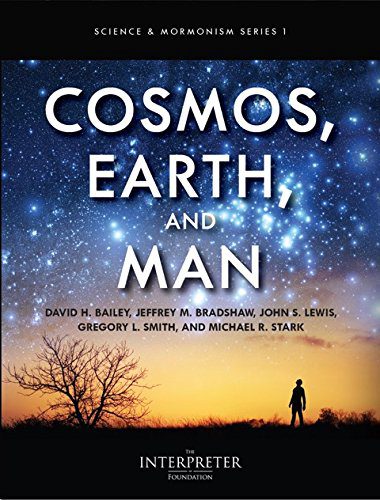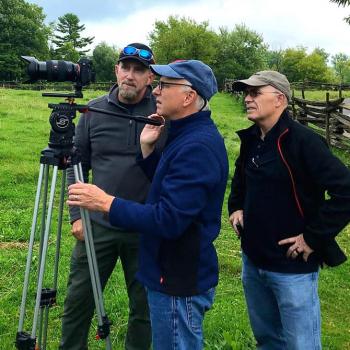
New on the website of the Interpreter Foundation, from David H. Bailey (Ph.D. Stanford University), a Latter-day Saint mathematician and computer scientist who is now retired from the Lawrence Berkeley National Laboratory in California:
“Science & Mormonism Series 1: Cosmos, Earth, and Man: Twenty Questions about Science and Religion”
Part of our book chapter reprint series, this article by David H. Bailey originally appeared in Science & Mormonism Series 1: Cosmos, Earth, and Man (2016).
Abstract: This chapter answers significant questions about science and religion, including the status of miracles, dating the age of the earth, evolution and intelligent design, the big bang, and “cosmic coincidences.”
***
We at the Interpreter Foundation are, at this very moment, looking to increase the number of conferences that we convene and the number of books that we publish (beyond the volumes of Interpreter: A Journal of Latter-day Saint Faith and Scholarship itself). As of now, though, here is a list of the books that we’ve put out. Any one of them, or all of them, would make an excellent Christmas present:
Books published by the Interpreter Foundation to this point
***
This is really quite surprising. To me, at least. And potentially quite significant:
“Ancient Gas Cloud Reveals That The Universe’s First Stars Formed Quickly”
“The discovery of a 13 billion-year-old cosmic cloud of gas enabled a team of Carnegie astronomers to perform the earliest-ever measurement of how the universe was enriched with a diversity of chemical elements. Their findings reveal that the first generation of stars formed more quickly than previously thought.”
***
A little debate has broken out in the comments to this blog between people who think that biological evolution must be unguided, “random,” and those who disagree. In this context, I share (again) some passages that I noted in the first two chapters of Alvin Plantinga’s book Where the Conflict Really Lies: Science, Religion, and Naturalism (Oxford and New York: Oxford University Press, 2011):
“The truth of the theory of natural selection . . . doesn’t for a moment show that all of life has come to be by way of unguided natural selection, or even that it is biologically possible that it has come to be that way.” (39-40; emphasis in the original)
“[T]here is nothing in current evolutionary science to show or even suggest that God did not . . . superintend evolution.” (46; original italics deleted)
“[C]urrent evolutionary science doesn’t include the thought that evolution is unguided; it quite properly refrains from commenting on that metaphysical or theological issue.” (55; original italics deleted)
“The scientific theory of evolution as such is not incompatable with Christian belief; what is incompatible with it is the idea that evolution, natural selection, is unguided. But that idea isn’t part of evolutionary theory as such; it’s instead a metaphysical or theological addition.” (63; emphasis in the original)
Already in these two early chapters, Professor Plantinga suggests ways in which God might have influenced evolution:
“He could do so, for example, by causing the right genetic mutations to arise at the right time, or by preserving a genomic feature that isn’t fitness-conferring, or in still other ways. He could do so either by ‘frontloading,’ i.e., selecting initial conditions he knows will issue, for example, in the mutations he wants, or by causing these mutations at the time they are needed.” (39 note 14)
Remember, Professor Plantinga isn’t saying that any one of these possibilities was actually the case. He’s simply showing that the claim that evolutionary theory excludes or disproves theism remains undemonstrated.












